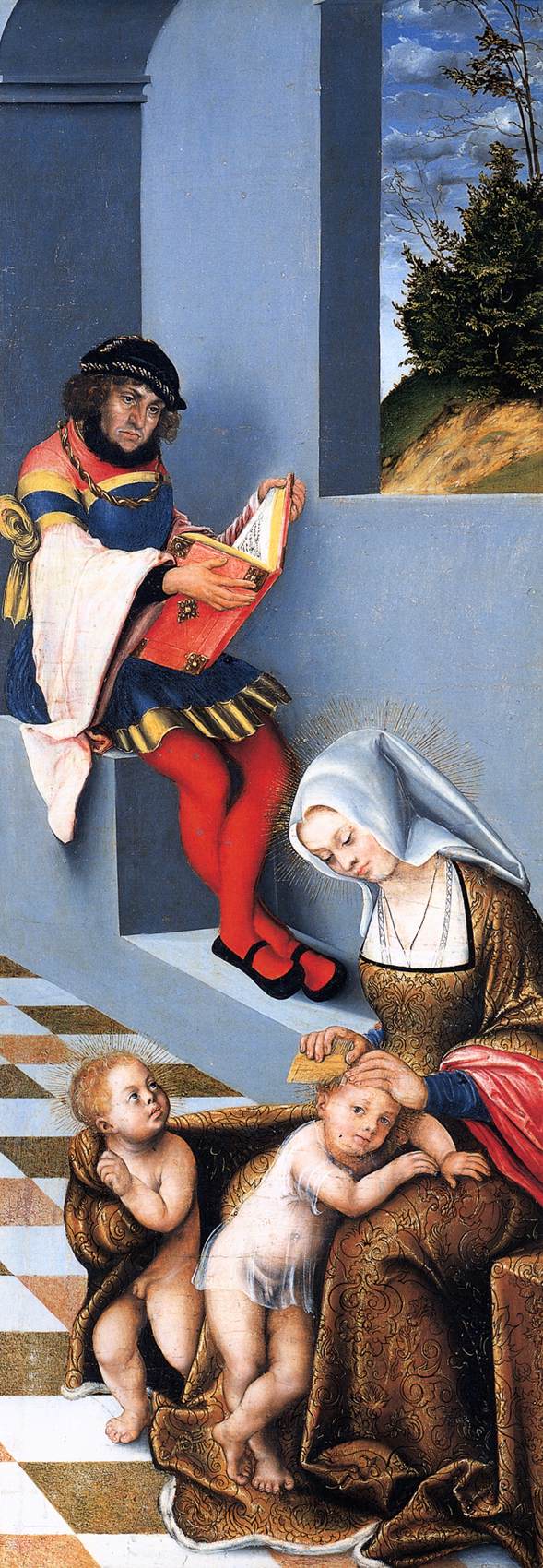Description
The painting "Triptych with the Holy Kinship (right wing)" by artist Lucas Cranach the Elder is a German Renaissance masterpiece featuring stunning composition and masterful use of color. The triptych, which measures 121 x 45 cm, is divided into three panels, the right panel being the one that represents the scene of the Holy Family.
The painting is famous for its unique artistic style, which combines elements of the late Gothic with the technique of the Italian Renaissance. Cranach was one of the first German artists to adopt this technique, and his work is a perfect example of how the Renaissance spread throughout Europe.
The composition of the painting is very interesting, as the Holy Family is in the center of the right panel, surrounded by a multitude of figures. In the background, a view of the city of Jerusalem can be seen, while in the foreground are various secondary characters, such as saints and angels.
The use of color in the work is also impressive. Cranach used a palette of bright and vibrant colors, which contrast with the dark background of the painting. The minute details and precision in the execution of the characters and objects are evident, demonstrating the artist's skill in his craft.
The story behind the painting is also very interesting. It was commissioned by the Elector of Saxony, Frederick III, and is believed to have been painted in 1509. The work was originally part of a larger altarpiece, which was dismantled in the 18th century. The triptych is currently in the National Museum in Stockholm, Sweden.
In conclusion, the painting "Triptych with the Holy Kinship (right wing)" by Lucas Cranach the Elder is an impressive work of art that combines elements of late Gothic and Italian Renaissance. His composition, use of color and minute details are examples of the artist's skill and mastery. In addition, its little-known history and aspects make this work a fascinating piece of European cultural heritage.

